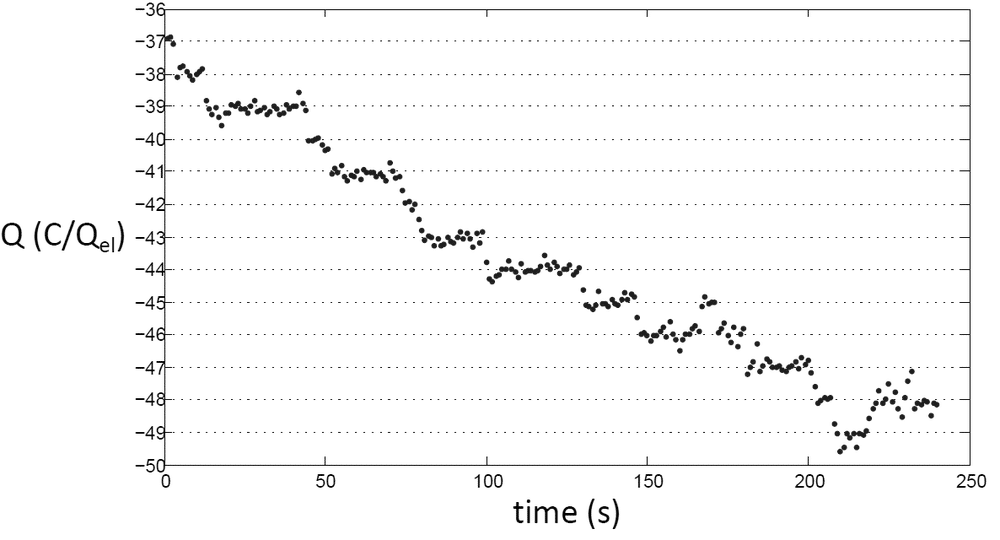In combination with optical tweezers, electrophoresis allows for accurate charge monitoring of single particles over long time intervals. The potential of this technique has been demonstrated by Beunis et al. [1], by measuring changes of only one elementary charge on a colloidal particle. This technique opens the possibility to study the dynamics of particle charging processes in e.g. nonpolar liquids, which are not yet understood.
A PMMA particle with a radius of 500 nm in n-dodecane is optically trapped between two parallel transparent electrodes, and is subjected to an AC electric field. The oscillating field induces a sinusoidal particle movement, which is monitored by analyzing the scattered laser light measured with a quadrant photodiode. Under these conditions, the surface charge of the particle can be measured accurately enough to distinguish single electron charges. We find that the charge increases over time as a result of the applied electric field, until it saturates at a surface charge value which is an order of magnitude higher than the initial charge.

Fig. 1. Measurement of the charge Q divided by Qel =1,714.10-19C, which is the periodicity in the charge histogram corresponding to the elementary charge.
Acknowledgement: We thank the agency for Innovation by Science and Technology (IWT), the IAP-VI project photon@be funded by BELSPO, the Belgian Science Policy program and the Hercules Foundation (project AUGE/013).
[1] F. Beunis, F. Strubbe ,K. Neyts, D. Petrov,
Phys. Rev. Lett. 2012, 108, 016101